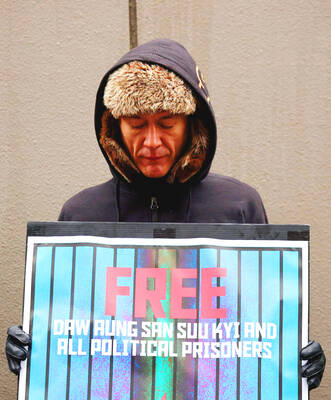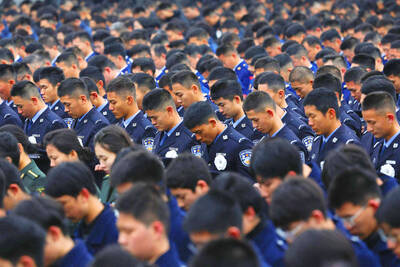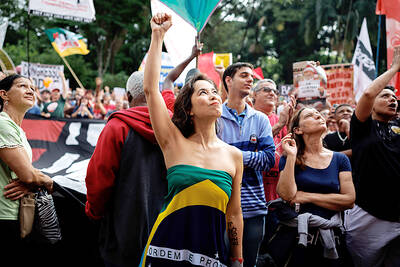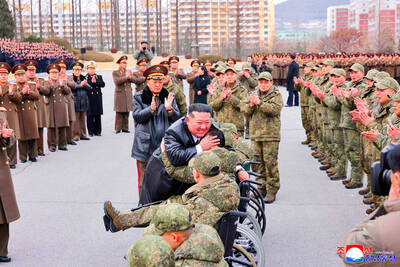Car bombs targeting religious processions in Iraq’s capital killed at least 26 people on Saturday on the last day of a Shiite pilgrimage already hit three times in some of the deadliest violence since US troops withdrew, police said.
The blasts were the latest in a fierce wave of terror attacks on the annual pilgrimage that sees hundreds of thousands visit the shrine to an 8th-century Shiite imam in northern Baghdad.
On Wednesday, 72 people died in nearly two dozen coordinated bombings targeting pilgrims across the country. Al-Qaeda’s affiliate in Iraq on Saturday claimed responsibility for that attack.
Al-Qaeda has been unleashing attacks every few weeks, trying to weaken the government of Iraqi Prime Minister Nouri al-Maliki and spark another round of the sectarian violence that brought Iraq to the brink of civil war only a few years ago. While fighting between Sunni and Shiite Muslim communities has all but died out in recent years, al-Maliki’s government has been plagued by sectarian tension since before the last US troops withdrew six months ago.
The first car bomb exploded just after noon near a throng of pilgrims streaming through the Shiite neighborhood of Shula in the north of the city, heading toward the shrine to Imam Moussa al-Kadhim. At least 14 people including two policemen were killed in the blast and 46 others were wounded, police said.
The bomb was hidden in a taxi parked among a group of other taxis waiting along the procession route to take pilgrims back to their home cities once Saturday’s ceremonies were over, the police official said. He spoke on condition of anonymity because he was not authorized to release the information. A hospital worker confirmed the death toll, also speaking on condition of anonymity for the same reason.
An hour later, a second car exploded in Kadimiyah neighborhood, about 5km from the mosque that contains the shrine where al-Kadhim is said to be buried. The same police official said that 12 people were killed and 26 were wounded when a parked car exploded as the crowds passed by.
The Kadimiyah attack hit inside a tight ring of security that authorities had thrown up around the shrine’s surrounding neighborhood after Wednesday’s multiple bombings. Police and soldiers had been searching vehicles and people at checkpoints leading into Kadimiyah for days.
Some said security forces had not done enough, especially for the masses of pilgrims on roads leading into Kadimiyah.
“There is no real security, no real searches,” said Mohamed Ali, who witnessed the first bombing in Shula, where authorities were towing away the burned remains of a car. “Today is an exceptional day — all security forces must be on high alert.”
Despite the latest violence, Saturday’s commemorations continued for al-Kadhim, a revered imam who was the Prophet Mohammed’s great-grandson.
Massive crowds carried symbolic coffins through the streets and pilgrims beat their chests as a sign of mourning as they streamed through Baghdad toward the mosque’s two golden domes. On the sidelines, people used hoses to spray water on the crowds to relieve scorching summer heat that reached 47°C.
“The terrorists will not discourage us,” vowed a song played over the mosque loudspeakers, promising to keep the centuries-old pilgrimage alive “even if they cut off our bodies into pieces.”
The mosque opened its doors to the pilgrims on Saturday’s final day of the commemoration, allowing them to enter and pray at al-Kadhim’s shrine before filing out of another exit.
The al-Kadhim procession was struck by tragedy in 2005, when thousands of Shiite pilgrims panicked by rumors of a suicide bomber broke into a stampede on a bridge, leaving about 1,000 of them dead.
Police later said no explosives were found on the bridge, and poor crowd control and the climate of fear in Iraq appeared largely to blame.

The Burmese junta has said that detained former leader Aung San Suu Kyi is “in good health,” a day after her son said he has received little information about the 80-year-old’s condition and fears she could die without him knowing. In an interview in Tokyo earlier this week, Kim Aris said he had not heard from his mother in years and believes she is being held incommunicado in the capital, Naypyidaw. Aung San Suu Kyi, a Nobel Peace Prize laureate, was detained after a 2021 military coup that ousted her elected civilian government and sparked a civil war. She is serving a

China yesterday held a low-key memorial ceremony for the 1937 Nanjing Massacre, with Chinese President Xi Jinping (習近平) not attending, despite a diplomatic crisis between Beijing and Tokyo over Taiwan. Beijing has raged at Tokyo since Japanese Prime Minister Sanae Takaichi last month said that a hypothetical Chinese attack on Taiwan could trigger a military response from Japan. China and Japan have long sparred over their painful history. China consistently reminds its people of the 1937 Nanjing Massacre, in which it says Japanese troops killed 300,000 people in what was then its capital. A post-World War II Allied tribunal put the death toll

‘NO AMNESTY’: Tens of thousands of people joined the rally against a bill that would slash the former president’s prison term; President Lula has said he would veto the bill Tens of thousands of Brazilians on Sunday demonstrated against a bill that advanced in Congress this week that would reduce the time former president Jair Bolsonaro spends behind bars following his sentence of more than 27 years for attempting a coup. Protests took place in the capital, Brasilia, and in other major cities across the nation, including Sao Paulo, Florianopolis, Salvador and Recife. On Copacabana’s boardwalk in Rio de Janeiro, crowds composed of left-wing voters chanted “No amnesty” and “Out with Hugo Motta,” a reference to the speaker of the lower house, which approved the bill on Wednesday last week. It is

FALLEN: The nine soldiers who were killed while carrying out combat and engineering tasks in Russia were given the title of Hero of the Democratic People’s Republic of Korea North Korean leader Kim Jong-un attended a welcoming ceremony for an army engineering unit that had returned home after carrying out duties in Russia, North Korean state media KCNA reported on Saturday. In a speech carried by KCNA, Kim praised officers and soldiers of the 528th Regiment of Engineers of the Korean People’s Army (KPA) for “heroic” conduct and “mass heroism” in fulfilling orders issued by the ruling Workers’ Party of Korea during a 120-day overseas deployment. Video footage released by North Korea showed uniformed soldiers disembarking from an aircraft, Kim hugging a soldier seated in a wheelchair, and soldiers and officials